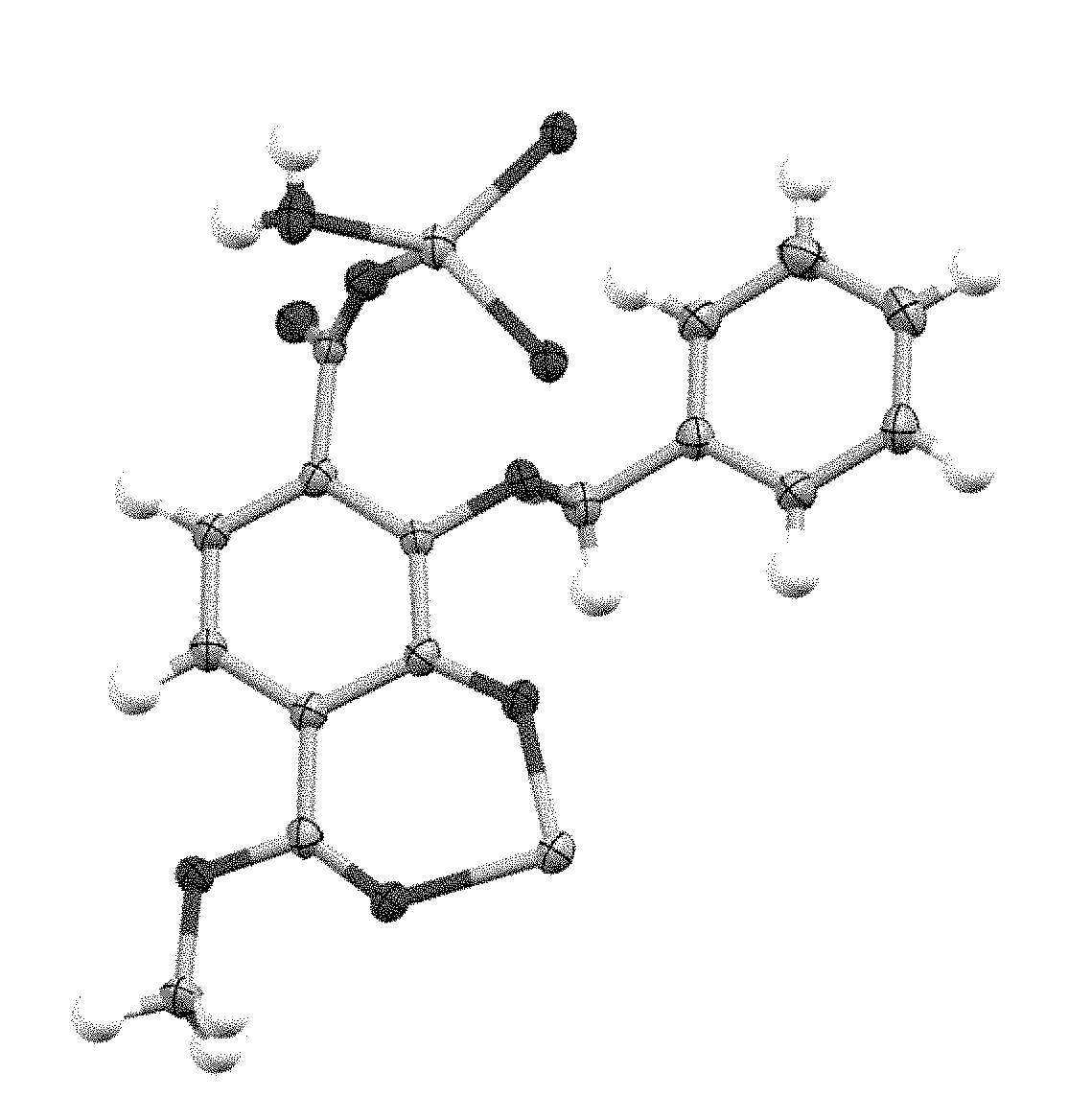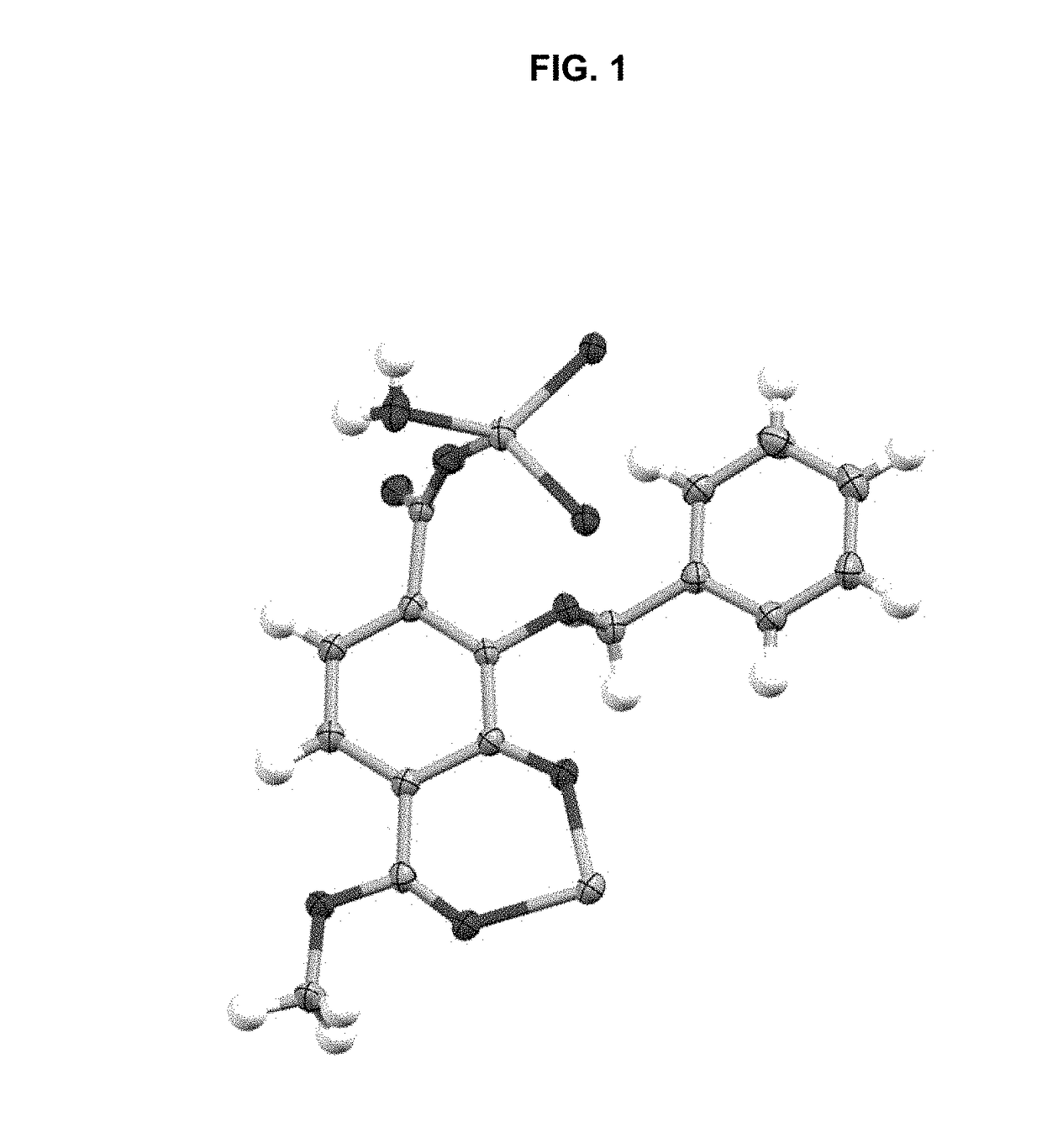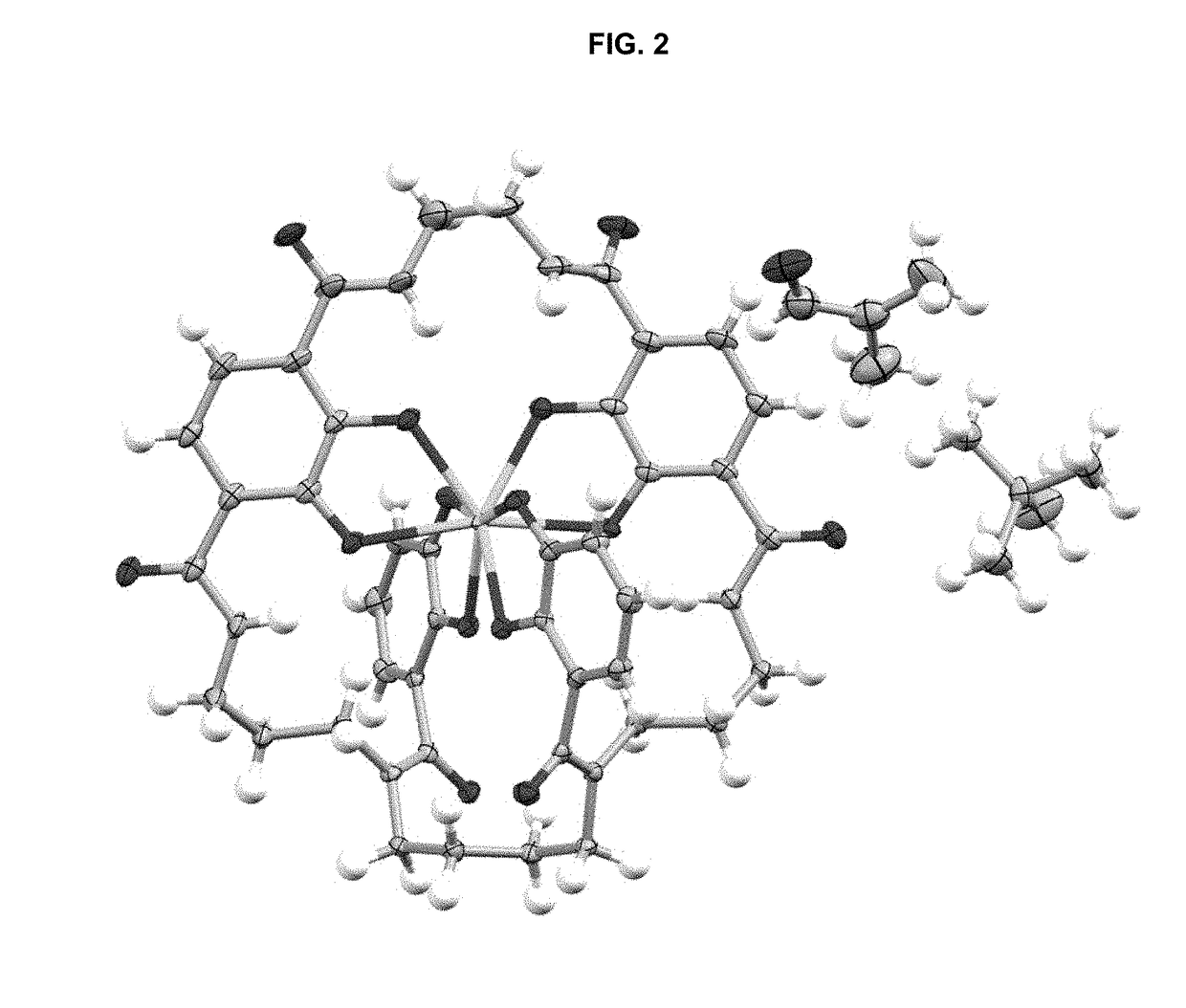Macrocyclic ligands with pendant chelating moieties and complexes thereof
- Summary
- Abstract
- Description
- Claims
- Application Information
AI Technical Summary
Benefits of technology
Problems solved by technology
Method used
Image
Examples
example 1
of Bridging 1,2-HOPO Intermediate 8
[0227]
[0228]The precursor 2-chloro-6-methylnicotinic acid (1) was purchased from A2Z Chemical (Irvine, Calif.). All other solvents and reagents were purchased from commercial sources and used as received unless otherwise noted. 1H-NMR and 13C-NMR spectra were obtained at 300 / 75 MHz, 400 / 100 MHz, or 500 / 125 MHz using a Bruker AV-300, AVB-400, or DRX-500 spectrometer as noted below. 1H (or 13C) chemical shifts are reported relative to residual solvent signals, taken as 7.24 (77.23) and 2.50 (39.51) ppm for CDCl3 and DMSO-d6 respectively. High resolution electrospray ionization mass spectra (HRMS-ESI) were performed by the Microanalytical Laboratory at the University of California, Berkeley.
[0229]6-Chloropyridine-2,5-dicarboxylic acid (2). Potassium hydroxide (112 g, 2 mol) was dissolved into water (1.5 L), and then 2-chloro-6-methylnicotinic acid (1, 100 g, 0.583 mol) was dissolved into the basic solution. The reaction was heated to 90° C. with stirr...
example 2
ata and Structure of Key Intermediate 7
[0236]Single crystals suitable for X-ray diffraction of key intermediate compound 7 were grown by slowly cooling a heated, concentrated solution of 7 dissolved in 1:9 methanol:water. Single crystal X-ray diffraction data were collected on a Rigaku diffractometer equipped with a Pilatus 200K CCD detector at the Small Molecule X-ray Crystallography Facility at the University of California, Berkeley. Structures were solved with SIR-97, refined with SHELX-97, and the refined atomic positions are displayed as 50% thermal ellipsoids using Mercury (FIG. 1). Publication materials were generated with WinGX. The crystal structure confirms which one of the two methyl esters present in compound 6 is selectively hydrolyzed at low temperature by lithium hydroxide. The crystal data and structure refinement statistics are summarized in the following tables.
TABLE 1Crystal data and structure refinement for 7•H2OIdentification code7•H2OEmpirical formulaC15 H14 Li...
example 3
of an Exemplary Parent Ligand 16
[0237]
[0238]The precursor 1-(benzyloxy)-6-oxo-1,6-dihydropyridine-2-carboxylic acid (14) was synthesized according to previously reported methods (Xu, J.; Durbin, P. W.; Kullgren, B.; Ebbe, S. N.; Uhlir, L. C.; Raymond, K. N. J. Med. Chem. 2002, 45, 3963.). All other solvents and reagents were purchased from commercial sources and used as received unless otherwise noted. 1H-NMR and 13C-NMR spectra were obtained at 300 / 75 MHz, 400 / 100 MHz, or 500 / 125 MHz using a Bruker AV-300, AVB-400, or DRX-500 spectrometer as noted below. 1H (or 13C) chemical shifts are reported relative to residual solvent signals, taken as 7.24 (77.23), 2.50 (39.51), and 3.31 (49.15) ppm for CDCl3, DMSO-d6, and methanol-d4 respectively. High resolution electrospray ionization mass spectra (HRMS-ESI) were performed by the Microanalytical Laboratory at the University of California, Berkeley.
[0239]Dimethyl 6,6′-((ethane-1,2-diylbis(azanediyl))bis(carbonyl))bis(1-(benzyloxy)-2-oxo-1,2...
PUM
| Property | Measurement | Unit |
|---|---|---|
| Structure | aaaaa | aaaaa |
| Luminescence | aaaaa | aaaaa |
Abstract
Description
Claims
Application Information
 Login to View More
Login to View More - R&D
- Intellectual Property
- Life Sciences
- Materials
- Tech Scout
- Unparalleled Data Quality
- Higher Quality Content
- 60% Fewer Hallucinations
Browse by: Latest US Patents, China's latest patents, Technical Efficacy Thesaurus, Application Domain, Technology Topic, Popular Technical Reports.
© 2025 PatSnap. All rights reserved.Legal|Privacy policy|Modern Slavery Act Transparency Statement|Sitemap|About US| Contact US: help@patsnap.com



